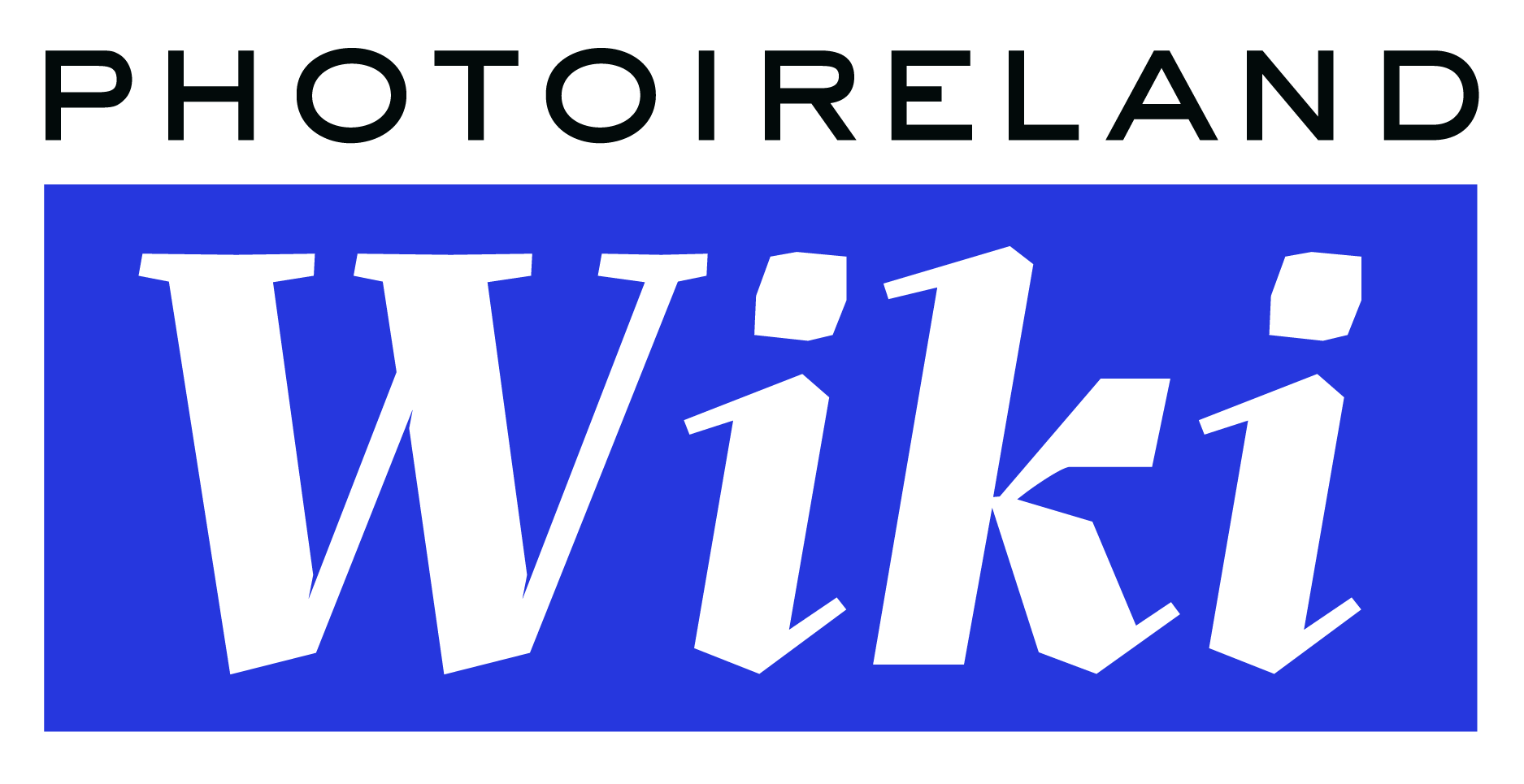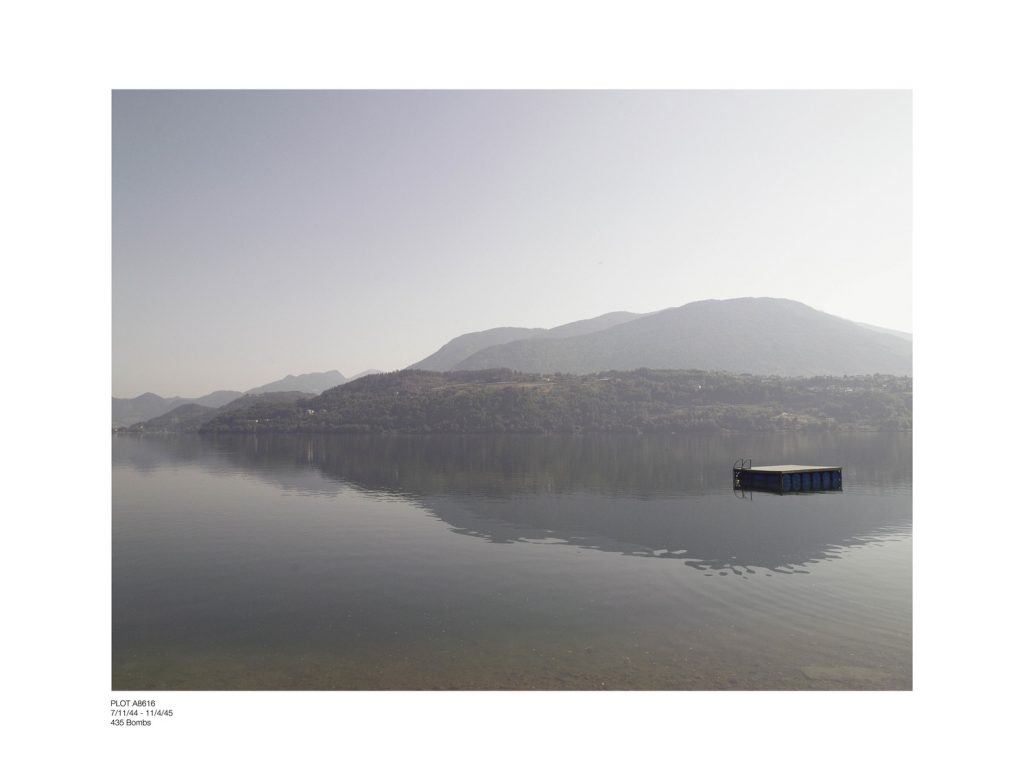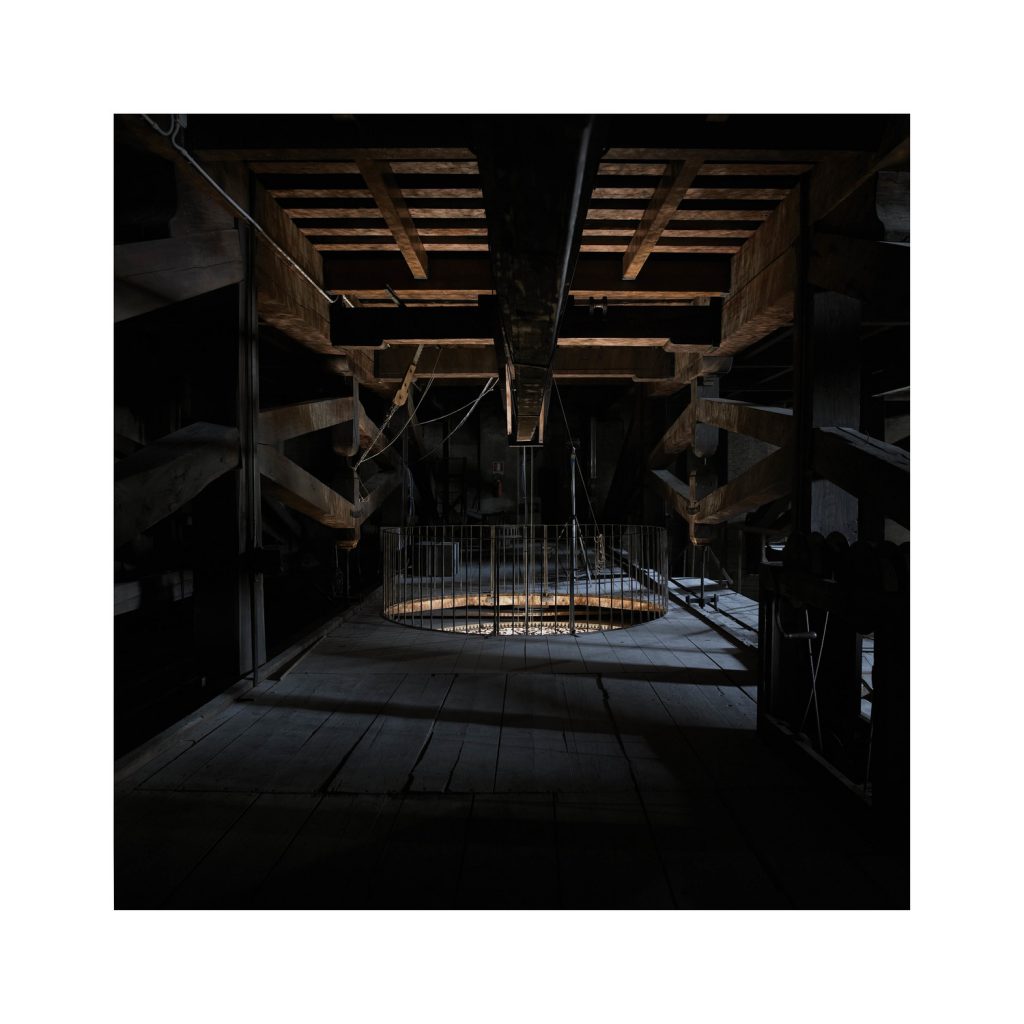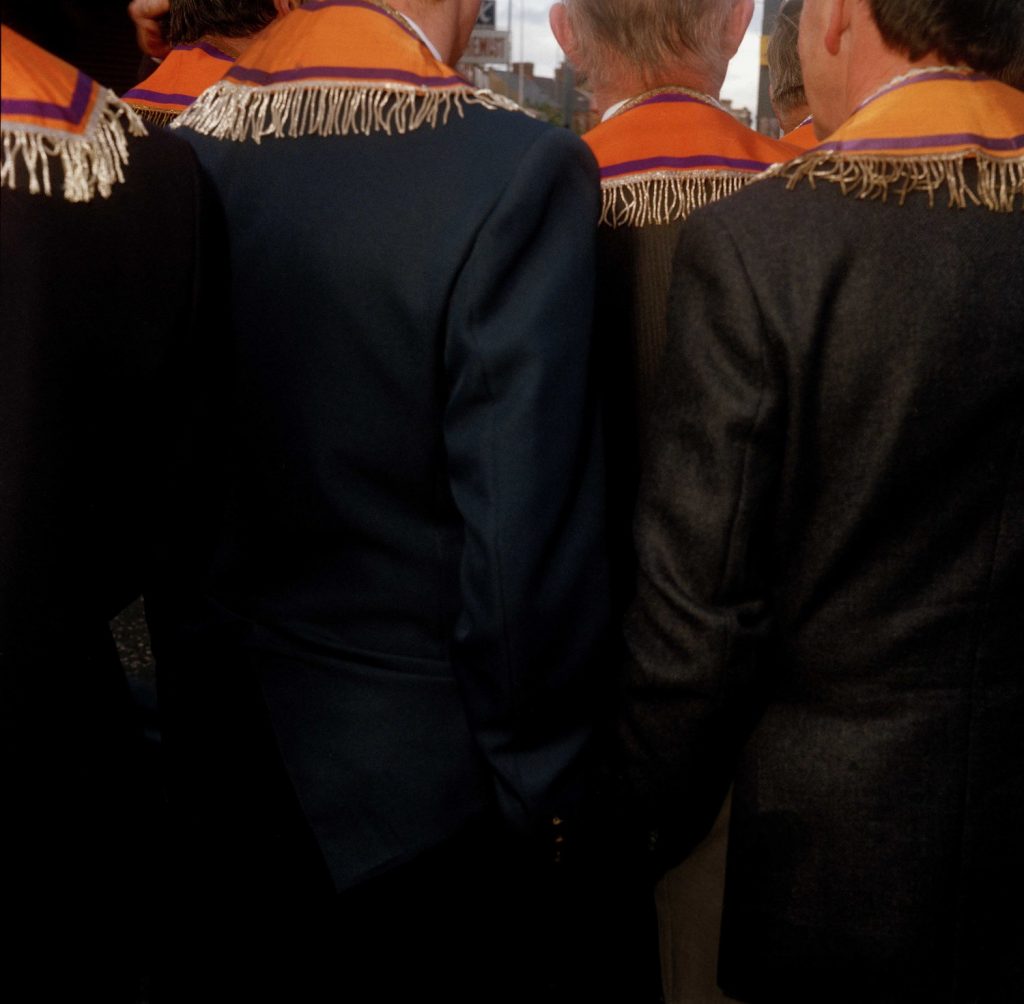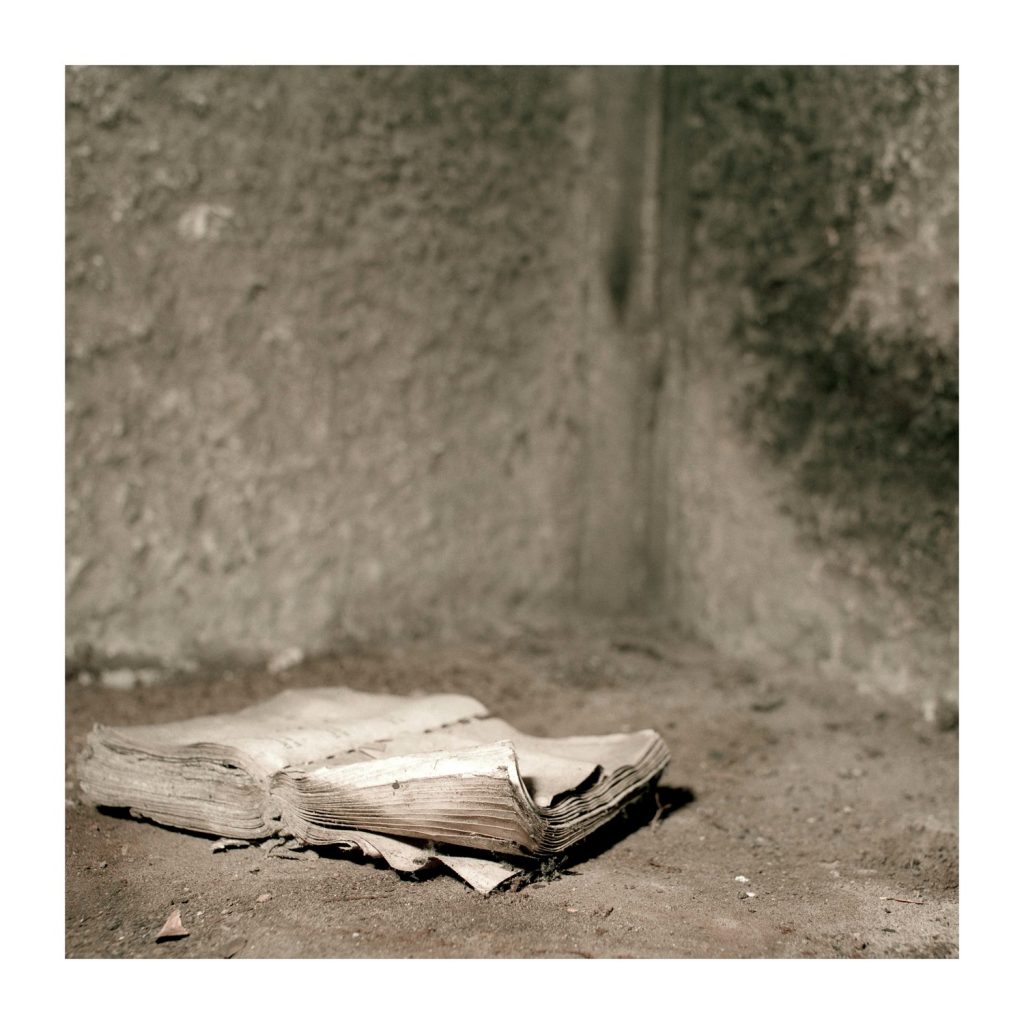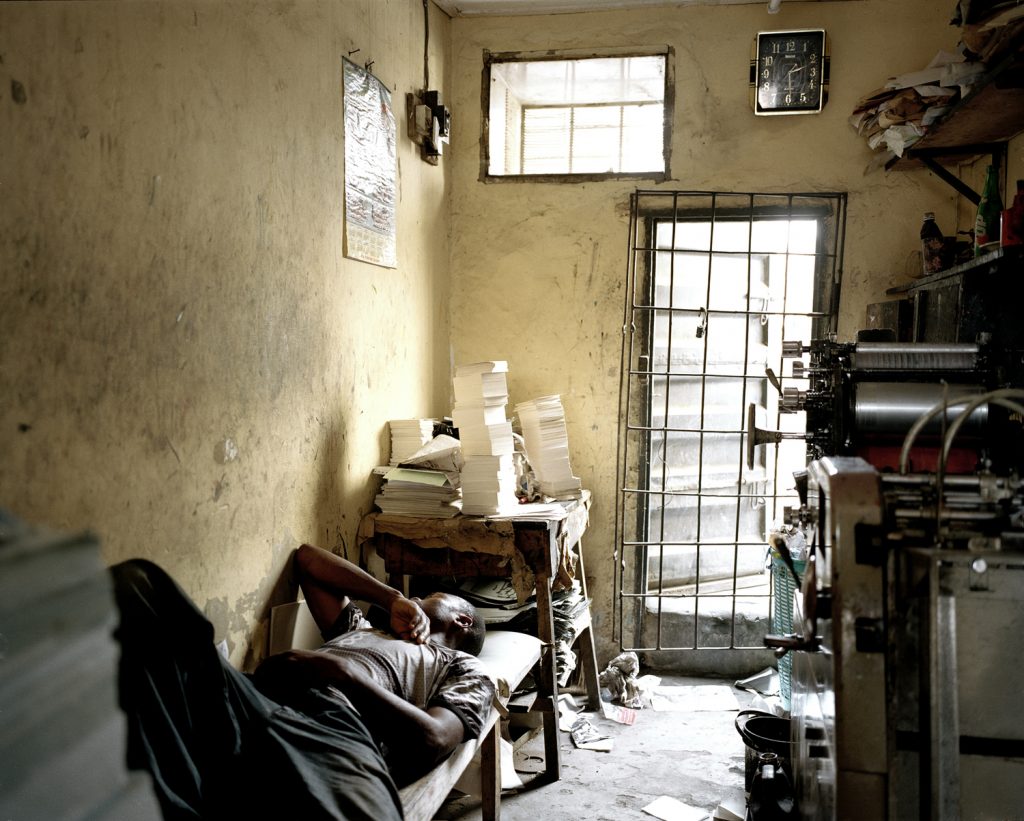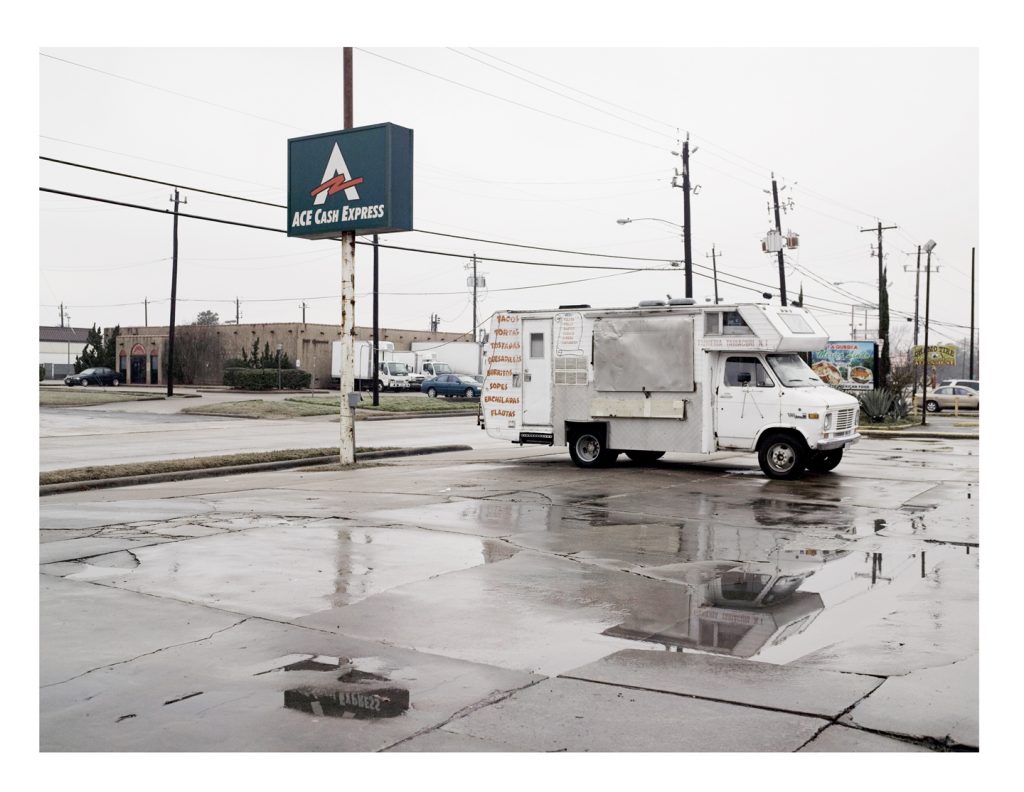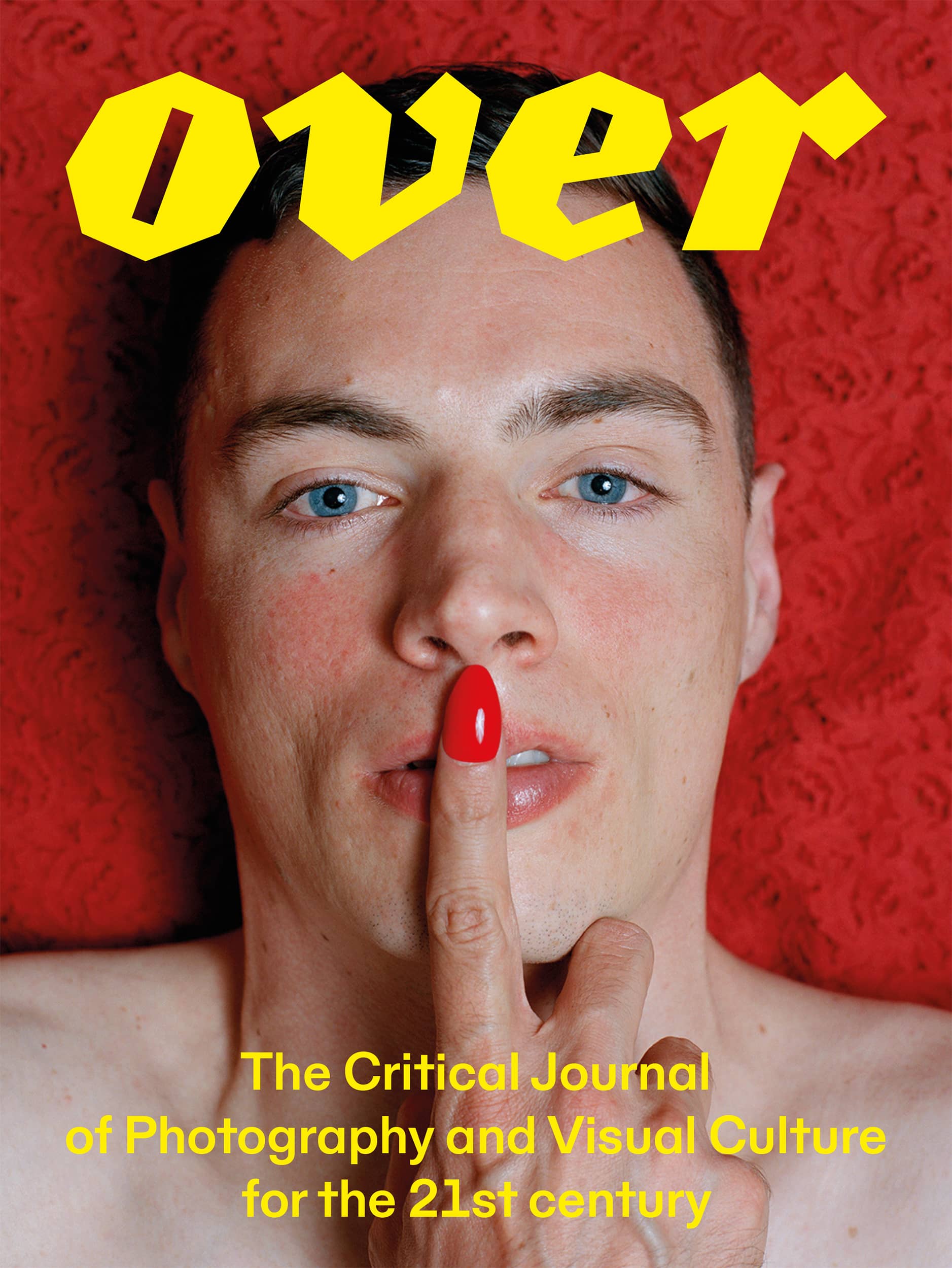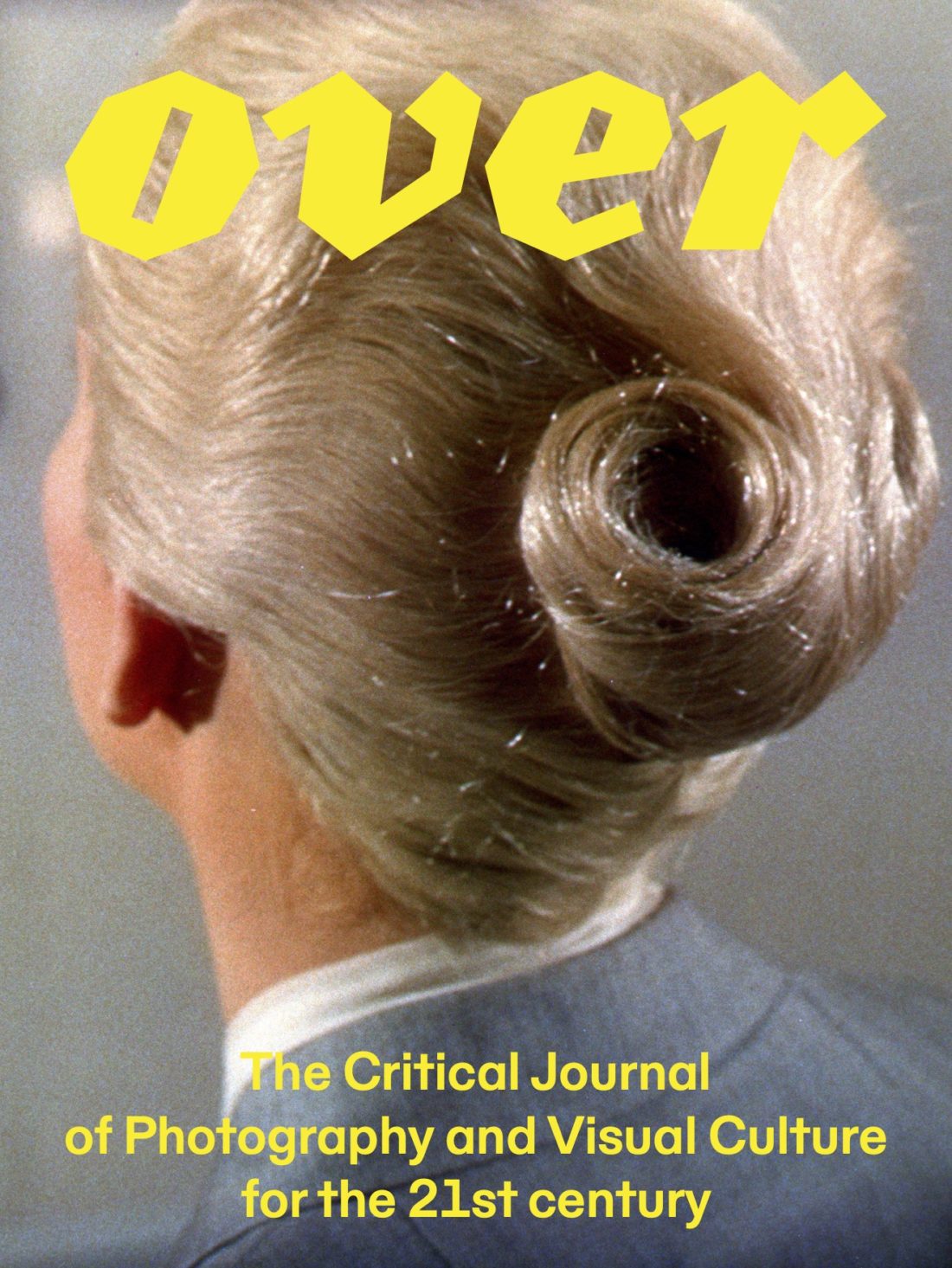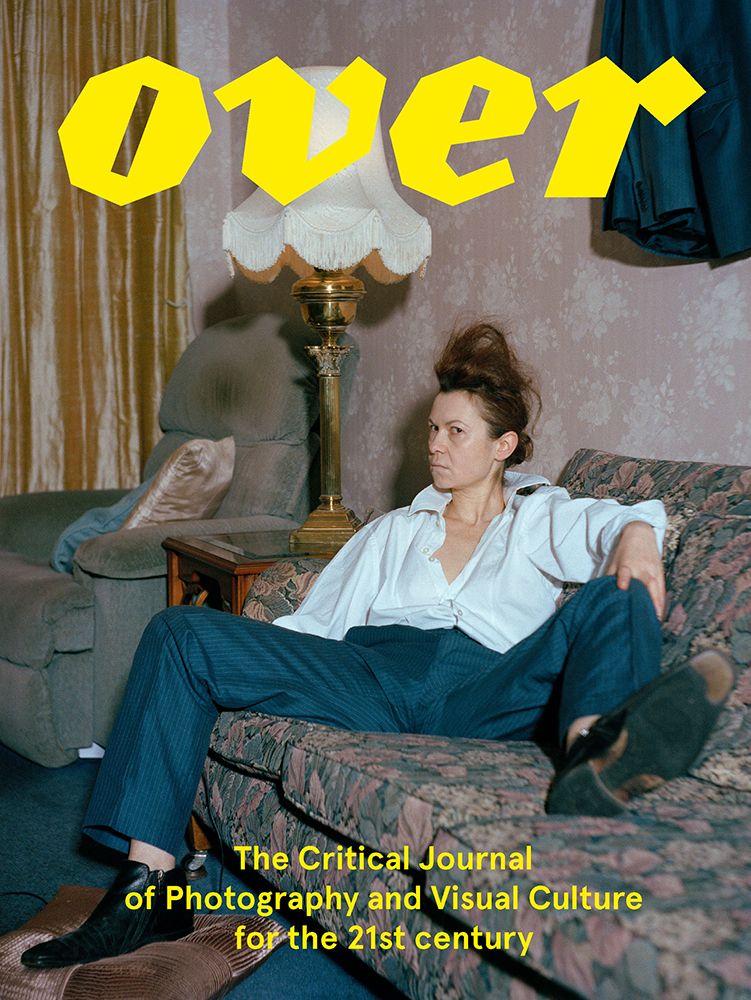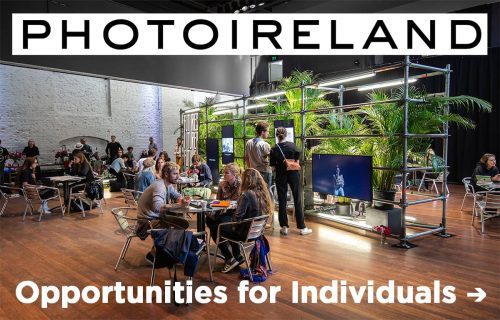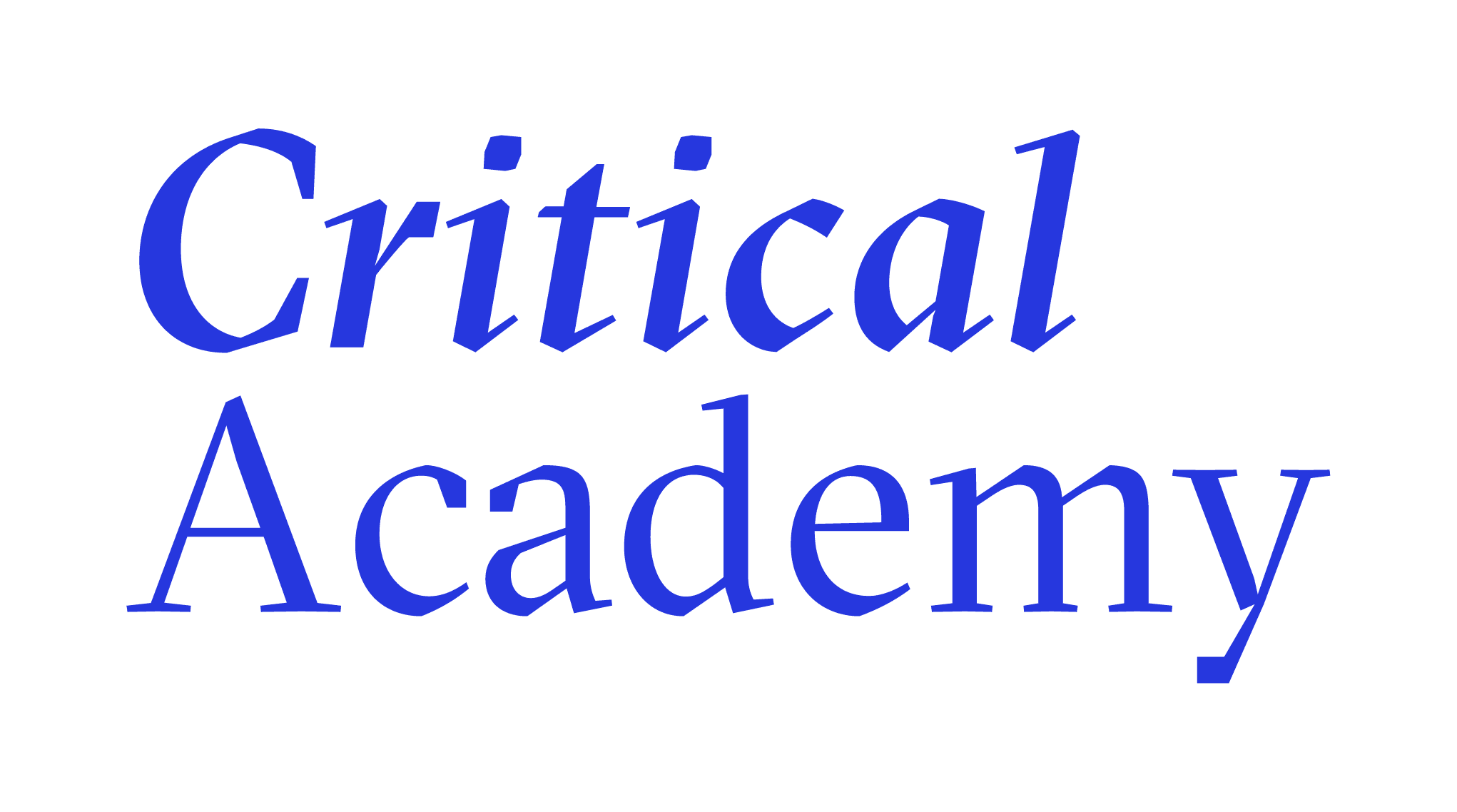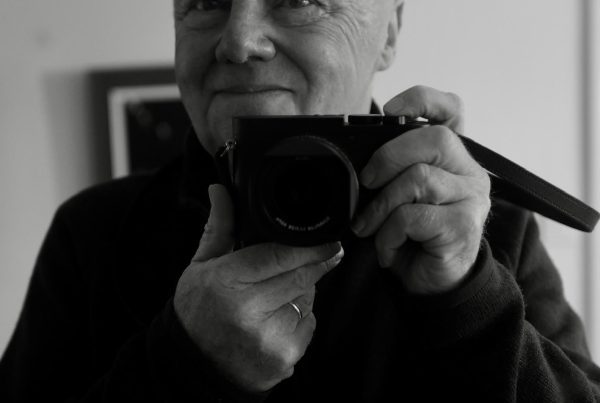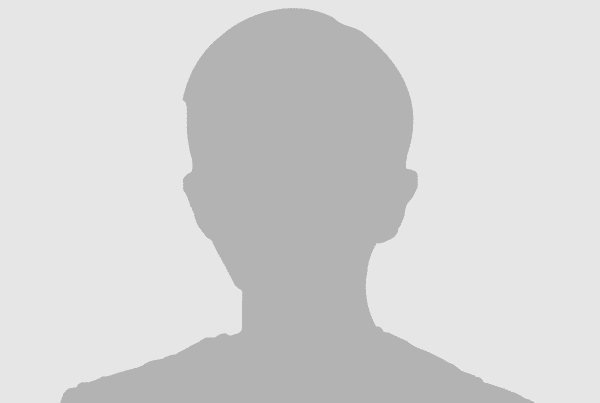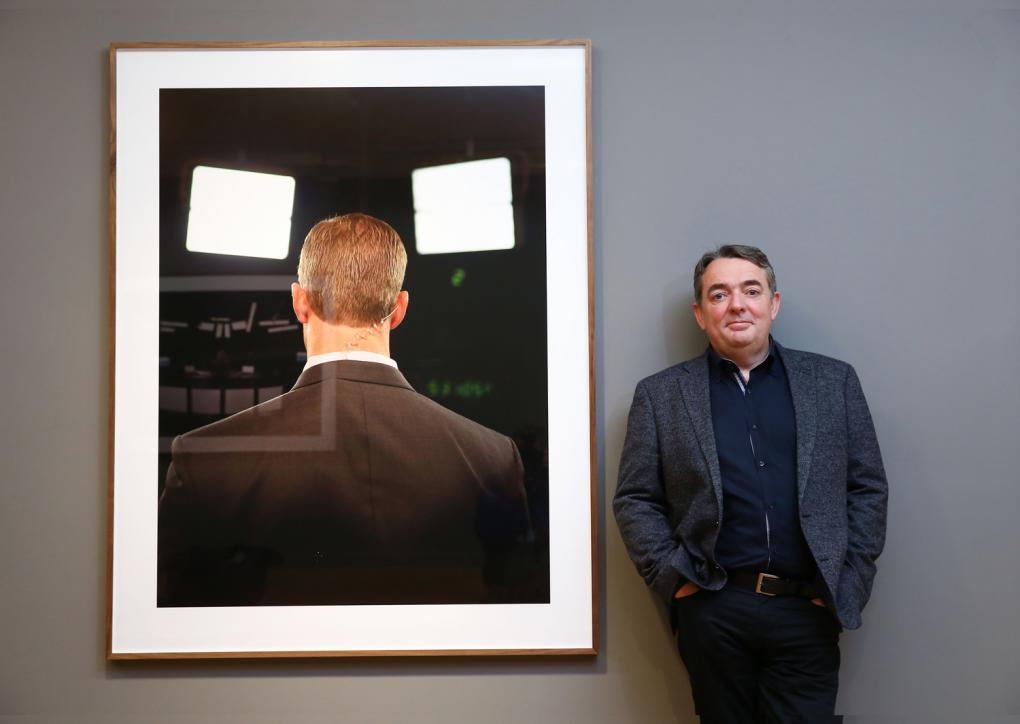

Paul Seawright, Things Left Unsaid, 2016
Born 1965 (Belfast, Northern Ireland)
Website paulseawright.com
Paul Seawright is Professor of Photography and Head of Belfast School of Art at the University of Ulster. His photographic work is held in many museum collections including The Irish Museum of Modern Art, Tate, San Francisco Museum of Modern Art, International Centre of Photography New York, Arts Councils of Ireland, England and N.Ireland, UK Government Collection and the Museum of Contemporary Art Rome. In 2002 he was commissioned by the Imperial War Museum London to undertake a war art commission in Afghanistan and his photographs of battle-sites and minefields have subsequently been exhibited in North America, Canada, Ireland, Spain, France, Germany, Korea, Japan and China. In 2003 he represented Wales at the Venice Biennale of Art and in 1997 won the Irish Museum of Modern Art/Glen Dimplex Prize. He is currently represented by the Kerlin Gallery Dublin. 1
Bio & Career
Seawright is a photographer who has drawn heavily on his Northern Irish background to produce searching photographic investigations of aspects of its fraught political terrain, as in his ‘Orange Order’ and ‘Police Force’ series from the early 1990s. In his recent work, Seawright has moved away from an overtly Irish context, focusing on what he has termed a ‘generic malevolent landscape’ represented by the uninhabited spaces at the edge of cities and forests throughout Europe. These images take the viewer from bright, bleached vacant lots to corners of almost complete darkness, lit only by the dim, ambient light of street lamps, where the city merges with the forest.2
Paul has been Head of Belfast School of Art since 2012 and was formerly Dean of Art, Media and Design at the University of Wales, Newport. He held the position of Director of research at Newport and is widely recognised as a subject expert in Art & Design research, participating on panels in RAE 08 and REF14. As a former member of the HEFCE expert advisory group on the development of the REF, he has advised numerous universities worldwide on research strategy. He currently sits on the advisory boards of the Imperial War Museum and British Council in London, having previously served as a Board member of the Arts Council of Northern Ireland.
Paul has an international profile as an artist and researcher. His work is held in many museum collections including the Irish Museum of Modern Art, the Tate, San Francisco Museum of Modern Art, International Centre of Photography New York, Arts Councils of Ireland, England and Northern Ireland, the UK Government Collection and the Museum of Contemporary Art in Rome. In 2002 he was commissioned by the Imperial War Museum London as War Artist for Afghanistan and was awarded the Irish Museum of Modern Art/Glen Dimplex award for a major contribution to Irish Art.
Paul has a first class honours degree in Photography, Film and Television and was awarded a PhD by the University of Wales in 2007. He is a Fellow of the RSA and the RPS, Honorary fellow of Cardiff Metropolitan University and former Vice President of the Royal Ulster Academy of Art. He currently holds Visiting Professorships at Sheffield Hallam, University of South Wales and the University of Porto.3
Publications
Photography books by Paul Seawright
- 2014 Things Left Unsaid, Artist Photo Books (2014), Dublin, 1st edition, ISBN: 978-0-9927485-4-8
- 2013 Volunteer, Artist Photo Books, Dublin ISBN: 978-84-608-7527-7
- 2007 Invisible Cities, Ffotogallery, Wales, ISBN-13: 978-1872771694
- 2005 Field Notes Fotomuseum Antwerp Belgium, ISBN: 90-6625-071-2
- 2003 Hidden Irish Museum of Modern Art/Imperial War Museum, ISBN: 1-901623-75-0
- 2001 the map, South Dublin City Council, ISBN: 0-9528-4564-4
- 2001 The Forest, Shoreditch Biennale/Hasselblad Museum ISBN: 91-631-0631-0
- 1995 Inside Information, The Photographer’s Gallery, London, in association with the Gallery of Photography, Dublin, ISBN: 0-907879-46-2
Awards and honours
- British Council
- Arts Councils Wales, England, Northern Ireland
- Irish Arts Council
- AHRB
- Irish Times Travel Research
- Aer Lingus Art Award
- In Context Commission, South Dublin County Council, Dublin
- Arts Council of Wales Visual Arts Core Funding Appraisals
- Ville de Paris Artist Award/Commission.
- BMW AutoWerke Commission, Johannesburg/Munich
- Irish Museum of Modern Art/Glen Dimplex Artists Award for outstanding contribution to Irish Art
- Leopold Godosky Award for Colour Photography – Boston
- Oakdale Trust Award for Documentary Photoghraphy
- Imperial War Museum War Artist commission – with Langlands and Bell, Afghanistan
- SEF European Month of Photography – Commisssion to photograph city of Reggio Emilia
Exhibitions
Solo exhibitions
- 2018 American Trilogy, Museum of Fine Arts, Shenyang, China
- 2015 Things Left Unsaid, Ulster Museum, Belfast, Northern Ireland
- 2015 Things Left Unsaid, The Model, Sligo, Ireland
- 2015 The List, Kerlin Gallery, Dublin, Ireland
- 2014 Making News – Things Left Unsaid, Centre Culturel Irlandais, Paris, France
- 2011 Volunteer, Kerlin Gallery, Dublin, Ireland
- 2010 Desert Stories – Paul Seawright Screenprints, BPW Gallery, Belfast, Northern Ireland
- 2009 Conflicting Account, Highlanes Gallery, Drogheda, Ireland
- 2009 Anxious Landscapes: Paul Seawright 1988-2008, GTG Belfast, Northern Ireland
- 2009 Conflicting Account – Paul Seawright New Works, Millennium Court Arts Centre, Portadown, Northern Ireland
- 2009 Paul Seawright, Solstice Arts Centre, Navan, Ireland
- 2008 Invisible Cities, Dublin City Art Gallery The Hugh Lane, Dublin, Ireland; Bury St Edmunds Museum and Art Gallery, Suffolk, UK
- 2007 Field Notes, National Media Museum, Bradford, UK
- 2007 Invisible Cities, Ffotogallery, Cardiff, UK
- 2007 Etudes Irlandaises, Sala Kubo-Kutxa, San Sebastian, Spain
- 2006 Invisible Cities, Sies + Hoke Gallery, Dusseldorf, Germany Hidden, Columns Gallery, Seoul, South Korea
- 2006 Invisible Cities, Naughton Gallery, Queens University, Belfast, Northern Ireland
- 2006 Oublier, Settimana della Fotografia Europea, Reggio Emilia, Italy
- 2006 Sectarian Murder, Fórum Cultural Mundial, Rio de Janeiro, Brazil
- 2005 Field Notes, Foto Museum Antwerp, Belgium
- 2005 Seoul Photo Triennale, The Seoul Museum of Art, South Korea
- 2005 Invisible Cities, Kerlin Gallery, Dublin, Ireland
- 2005 Hidden, Blue Sky Gallery and Portland Art Museum, Oregon, USA
- 2004 Centre Photographique D’Ile-de-France, France
- 2004 Photosynkria – Thessaloniki Museum of Photography, Greece
- 2004 Hidden, Sies-Hoke, Dusseldorf, Germany
- 2004 Hidden, Rena Bransten Gallery, San Francisco, USA
- 2003 Further, Wales at The 50th Venice Biennale, travelling to National Museum of Wales, Cardiff and Glynn Vivian, Swansea
- 2003 Irish Museum of Modern Art
- 2003 L’Espace Vox, Mois de la Photo Montreal Le Printemps de Septembre, Toulouse 2003 Imperial War Museum, London Chapter, Cardiff
- 2003 Oriel Mostyn, Llandudn, Wales, UK
- 2003 Aberystwyth Arts Centre and Gallery MKG, Milton Keynes Gallery
- 2002 Foundation Marangoni, Florence Italy Inside Open – Napoli, Italy
- 2001 Douglas Hyde Gallery, Dublin
- 2001 Hasselblad Centre, Kunst Museum, Gothenberg, Sweden
- 2001 Angles Gallery, LA International Biennale Galerie du Jour, Agnes b Paris
- 2000 Museum of Contemporary Art Zagreb Grieder Von Puttkamer, Berlin
- 2000 Rhona Hoffman Gallery, Chicago, USA
- 2000 Rena Bransten Gallery, San Francisco, USA
- 2000 Bonakdar Jancou Gallery, New York, USA
- 2000 Photo.doc, Forum Box, Helsinki, Finland
- 2000 Maureen Paley/Interim Art, London, UK
- 2000 Centro de Fotografia, University of Salamanca, Spain
- 1999 Kerlin Gallery, Dublin
- 1998 Angles Gallery, Santa Monica Rhona Hoffman Gallery, Chicago
- 1998 Rena Bransten Gallery, San Francisco Galerie du Jour/Agnes b, Paris
- 1997 Blue Sky Gallery, Portland, Oregon Le Lieu, l’Orient, France
- 1997 Françoise Knabe Gallery, Frankfurt, Germany
- 1996 Ffotogallery, Cardiff Houston Fotofest
- 1995 The Photographers’ Gallery, London. Gallery of Photography, Dublin
- 1994 Cornerhouse, Manchester
- 1993 Blue Sky Gallery, Portland, Oregon
- 1993 The United Nations General Assembly Building, New York
- 1993 Arts Council Gallery, Belfast The Old Museum, Belfast
- 1992 The International Center of Photography, New York Impressions Gallery, York
- 1992 The Gallery of Photography, Dublin
Group exhibitions
- 2018 There Not There, Courtauld Gallery, London
- 2017 A Green and Pleasant Land, Towner Art Gallery, Eastbourne, UK
- 2017 Rhona Hoffman 40 Years, Part 3: Political, Rhona Hoffman Gallery, Chicago, IL, USA
- 2017 so it is, Mattress Factory, Pittsburgh, PA, USA
- 2015 Work, Rest and Play, OCT-LOFT, Shezhen, China
- 2014 New Art New Nature, Ulster Museum, Northern Ireland
- 2013 Catalyst: Contemporary Art and War, Imperial War Museum North, Manchester 2013 Northern Ireland: 30 Years of Photography, Belfast Exposed and The Mac, Belfast
- 2013 Changing States: Contemporary Irish Art and Francis Bacon’s Studio, Bozar Centre for Fine Art, Brussels
- 2012 Living / Loss: The Experience of Illness in Art, Lewis Glucksman Gallery, Cork
- 2012 Into the Light: The Arts Council – 60 Years Supporting the Arts, Crawford Art Gallery, Cork
- 2011 The Long View, Gallery of Photography, Dublin
- 2011 Detonating Rough Ground, two-person show with Sophie Ristelhueber, Ormeau Baths Gallery, Belfast
- 2010 Hereford Photography Festival 2010, UK
- 2010 Sacred: Reconsidering the sacred in art, Enniskillen Castle, Enniskillen, Ireland
- 2010 Fall Out: War and Conflict in the British Council Collection, Whitechapel Gallery, London
- 2010 Nothing is in the Place, Krakow Photomonth, Poland
- 2010 Teaching Photography, Museum Folkwang, Essen, Germany
- 2010 Archiving Place & Time – Art since the Belfast Agreement, Wolverhampton Museum, Manchester City Art Gallery
- 2010 Warzone, Fries Museum, Netherlands
- 2010 Elective Perspective, Galeria Arsenale, Bialystok, Poland
- 2010 BIP2010 (Out of)Control, Biennale internationale de la Photographie et des Arts visuels, Liege, Belgium.
- 2009 The Sublime Image of Destruction, Brighton Bienalle – De La Warr Pavilion
- 2009 The sightless landscape (Paesaggio dell’invisibile), Galleria Traghetta Venice and Rome
- 2009 Then & Now: Evolving Art Practices, Lewis Glucksman Gallery, Cork
- 2009 The Troubles, Art and the Archive in Northern Ireland, OBG Belfast
- 2009 Can Art Save Us?, Millennium Gallery, Museum Sheffield
- 2009 Planète Parr, Jeu de Paume, Paris
- 2009 Ulsan International Photo Festival – South Korea
- 2008 10,000 to 50, Irish Museum of Modern Art, Dublin
- 2008 Different Dimension, The 2nd Novosibirsk International Festival of Contemporary, Russia
- 2008 Photography: Novosibirsk State Art Gallery, Russia
- 2008 UXB – Fotografia Europea, Reggio Emilia, Italy
- 2008 Disrupted Landscapes, FSM Gallery, Florence, Italy Metenkov, Photographic Museum Ekaterinburg, Russia
- 2007 How We Are, Tate Britain, London Margenes, Photo Espania, Madrid
- 2007 Etudes Irlandaises, Sala Kubo-Kutxa San Sebastian
- 2007 Recent Acquisitions, Hugh Lane Dublin City Gallery, Dublin
- 2007 Atlante Italiano 07, MAXXI Rome
- 2007 Resolutions: New Art from Northern Ireland, Katzen Centre, American University Washington DC
- 2007 Landed: New British Landscape, FSM Gallery, Florence
- 2007 The Art of Looking, Lewis Glucksman Gallery, Cork
- 2006 Beautiful Suffering, Photography and the Traffic in Pain, Williams College Museum, Boston, MA, USA
- 2006 Sectarian Murder, Fórum Cultural Mundial, Rio de Janeiro, Brazil
- 2006 Disembodied Eye, Golden Thread Gallery, Belfast
- 2006 Motor Blues, Museum der Bildenden Kunste, Leipzig
- 2006 The Wonderful Fund Collection, Le Musee de Marrakech, Morocco
- 2005 Autowerke, Mueseum der Bildenden Kunste, Leipzig
- 2005 The Wonderful Fund Collection, Le Museé de Marrakech, Morocco Four Now, Lewis Glucksman Gallery, University of Cork, Ireland
- 2005 Seeing Orange, Millennium Centre Portadown, Northern Ireland
- 2004 Views from an Island: Irish Contemporary Art, Shanghai Art Museum, Shanghai, travelling to Millennium Monument Museum, Beijing
- 2004 Que des Histoires, Galerie du Jour, Agnes b, Paris Landscape of War, Centre d’Art la Panera, Spain
- 2004 Landscape, Rena Bransten Gallery, San Francisco
- 2004 Collection de Agnes b, Les Abbattoirs, Frac Midi Pyrenees Photosynkria, Thessaloniki Museum of Photography, Greece
- 2003 Disaster Area, The Glasshouse, Amsterdam Centro Cultural de Belem, Lisbon
- 2003 Re-Imagining Ireland: Irish Art Today, University of Virginia Art Museum, USA
- 2003 Recherche, Galerie du Jour Agnes b, Paris
- 2002 The Unblinking Eye, Irish Museum of Modern Art, Dublin
- 2002 GewaltBilder, Gewalt in der Gegenwartskunst Museum Bellerive, Zurich
- 2002 The Gap Show, Critical Art from Great Britain Museum am Ostwall, Dortmund, Germany
- 2001 Irish Art Now: From the Poetic to the Political, Chicago Cultural Centre, Irish Museum of Modern Art, Dublin
- 2001 New Directions, Winston Wachter Fine Art, Seattle
- 2001 A470, Oriel Mostyn Gallery, Llandudno, Wales; Chapter, Cardiff
- 2001 Werner Mantz Prize, Centrum Beeldende Kunst, Maastricht, Netherlands
- 2001 Depicting Abscence/Implying Prescence, San Jose Institute of Contemporary Art, CA, USA
- 2001 On the Margins, three-person exhibition with Michael Ashkin and Jan Henle, Barbara Krakow Gallery, Boston, USA
- 2001 Shifting Ground, 50 Years of Irish Art, Irish Museum of Modern Art, Dublin
- 2000 Auto Werke, Deichtorhallen, Hamburg, Ireland
- 2000 British Art Show 5, Scottish National Gallery of Modern Art, Edinburgh; Southampton City Art Gallery; Ffotogallery, Cardiff; Ikon, Birmingham
- 2000 0044, Ormeau Baths Gallery, Belfast and Crawford Art Gallery, Cork
- 2000 Irish Art Now: From the Poetic to the Political, McMullen Museum of Art, Boston College; Art Gallery of Newfoundland and Labrador, Canada; Chicago Cultural Center, Chicago, USA
- 2000 Foto Biennale, Rotterdam
- 2000 Lautlose Gegenwart, Bielefelder Kunstverein, Germany
- 1999 0044, PS1, New York; Albright-Knox Art Gallery, Buffalo, USA
- 1999 Necropolis, Galerie Georges-Philippe & Nathalie Vallois, Paris
- 1999 Engaging Tradition, Hotbath Gallery, Bath, UK
- 1999 Surveying The Landscape, Lombard/Freid Fine Arts, New York, USA
- 1999 Fragments of Document & Memory, Tokyo Photo Bienalle, Tokyo Metropolitan Museum of Photography, Japan
- 1999 Contemporary Art, Ormeau Baths Gallery, Belfast
- 1999 Concern for the Document, Vox Populi, Le Mois de la Photo, Montreal, Canada
- 1999 Silent Presence, Staatliche Kunsthalle, Baden-Baden, Germany
- 1999 Contemporary Art, Arts Council of Ireland Collection, Limerick City Art Gallery
- 1999 Under Exposed, Public Art Project, Stockholm
- 1999 Revealing Views; Images from Ireland, Royal Festival Hall, London
- 1999 Declinations of Boundaries, two-person show, Galerie Lichtblick, Cologne
- 1998 Troubled: Photography and Video from Northern Ireland, The Light Factory and Contemporary Art Museum, Raleigh, North Carolina, USA
- 1998 Europe in Decay, three-person exhibition, Light Hall, Kuopio and Helsinki Cathedral, Finland
- 1998 Sightings – New Photographic Art, ICA, London
- 1998 Le Printemps, two-person exhibition with Martin Parr, Cahor, France
- 1998 Photos Leurres, French Institute, Prague
- 1997 The Missing, three-person exhibition, Netherlands Foto Instituut, Rotterdam, Holland
- 1997 Political Spaces, three-person exhibition, Rena Bransten Gallery, San Francisco
- 1997 Recent Acquisitions, Irish Museum of Modern Art, Dublin
- 1997 Residue, Douglas Hyde Gallery, Dublin
- 1997 NGBK, Contemporary British Photography, Berlin
- 1997 IMMA/Glen Dimplex Artists Award, Irish Museum of Modern Art, Dublin
- 1996 Lie of the Land, Gallery of Photography, Dublin, travelling to Centre Nationale de la Photographie, Paris, Copenhagen, Salamanca, Athens, Prague
- 1996 Kerlin Gallery, Dublin
- 1996 Inside Out, three-person exhibition with Richard Billingham & Tom Wood, Galerie du Jour/Agnes B, Paris
- 1996 L’Imaginaire Irlandais, École des Beaux Arts, Paris
- 1995 Ceasefire, Wolverhampton Museum and Art Gallery, UK
- 1994 Different Stories, Photo International Rotterdam, Nederlands Foto Instituut, Rotterdam
- 1994 Nervous Landscapes, Southeast Museum of Photography, Florida, USA
- 1994 Documentary Dilemmas, Museo De Arte, Sao Paulo, Brazil
- 1993 Documentary Dilemmas, British Council touring Europe, South America, Ireland
- 1993 Godowsky Awards, PRC Gallery, Boston.
- 1992 History of the Photographic Image, Rencontres Intls de la Photographie, Arles, France
- 1992 Recent Acquisitions, Ulster Museum, Belfast
- 1992 Through the Lens, Arts Council of Northern Ireland touring exhibition
- 1992 Current Account, Royal Photographic Society, Bath; Mai de la Photo, Reims
- 1991 Exhibition accompanying the Northern Ireland Cultural Counterpoint Conference, State University of New York at Binghamton
- 1991 Shocks to the System, Arts Council of Great Britain, Royal Festival Hall, London; Ikon Gallery, Birmingham
- 1988 Death, Cambridge Darkroom Gallery / Kettles Yard Show of Hands, The Photographers’ Gallery, London
Projects
- They Dropped Like Flakes – They Dropped Like Stars (2017)
They Dropped Like Flakes, They Dropped Like Stars (2017) presents the American landscape as a form of battlefield, where 20 military veterans a day commit suicide nationwide. According to new data from the Department of Veterans Affairs — In 2014, the latest year available, more than 7,400 veterans took their own lives. In many units more soldiers are lost to suicide after they return home from war than were lost in the field.
- The List (2015)
Although residence restrictions for convicted sex offenders are widely enforced in the United States, these policies remain controversial. Most restrictions are defined geographically, prohibiting convicted offenders from establishing a permanent residence within a prescribed distance from sensitive facilities like schools, parks, and bus stops. One of the collateral consequences of the seemingly haphazard landscape of residence restrictions is the emergence of sex offender clusters. These photographs map that landscape.
- Things Left Unsaid (2014)
Exploring the theatre of war through the internal landscape of the US television news studio. Developing Virilio’s writing on electronic warfare and weapons of mass communication, Seawright focuses on the illusory nature of these spaces, where information is selectively transformed into news. Characteristically Seawright continues his exploration of contested spaces and illuminates an invisible aspect of contemporary conflict. Book published in conjunction with the exhibition at the Centre Culturel Irlandais, Paris, The Model, Sligo and The Ulster Museum.
- Volunteer (2011)
Volunteer is a survey of sorts, photographs from today’s fraying, centreless post 9-11 North American cities. Each photograph made at the location of a military recruiting station, where a different battle is being fought – to find young men and women to volunteer for service in Afghanistan. Starting in Texas, the highest recruiting state in the US, Seawright visited over 500 military recruitment offices in fifteen states. These new works comment not just on the ongoing war and the battle to recruit new soldiers, but the contemporary North American city, a landscape littered with thrift stores, gun dealerships, fast food outlets, nightclubs, car dealerships beneath super-sized American flags, strip malls and pawn shops. It is in these spaces on the margins of small towns and cities that the recruiters look to find the volunteers of tomorrow.Southern states account for 36 percent of the nation’s young adults, according to the Department of Defense, but provide 41 percent of the nation’s recruits. Texas is the top state in the South, supplying about 10 percent of military enlistees each year. The services sign up between 280,000 and 300,000 new soldiers, sailors, airmen and Marines annually and, typically have little problem hitting their numbers. In 2010, for the first time, the four largest branches of the armed forces- the Army, Navy, Air Force and Marines, comfortably exceeded their recruiting goals. About 99 percent of enlistees have a high school diploma, and scores on the military entrance exam are the highest in the history of the all-volunteer force.
- Conflicting Account (2009)
A series of photographic works that examine the disparate and often conflicting narratives of Northern Irish history. Working in history classrooms of Protestant and Catholic schools and on housing projects from both communities Seawright recovers visual fragments and texts which represent the layering of narrative, a continual writing and re-writing of history and the conflicting rhetoric of two traditions.
- UXB (2008)
These works examine landscapes of concealment from the Trentino region of Northern Italy. Using Aerial Interdiction Mapping conducted by Cambridge Architectural Research Ltd, the photographs indicate the distribution of unexploded ordinance dropped on Italy by the British in 1944. The works were commissioned for the initiative Italian atlas: portrait of a changing Italy , conducted by the MIBAC (Ministry for Cultural Heritage and Activities) Italy and DARC (Director General for contemporary art and architecture), Rome. They were first shown in MAXXI Rome. They pose the question; How can the photographic interrogation of landscape excavate narratives and histories not visible on the surface of the land? How can the post-conflict landscape offer revitalized insights into the narratives of war and the memorializing of history?
- Perimeter (n.d.)
Perimeter examines the Olympic Park in Homebush, Sydney. Developed for the 2000 summer Olympics the park has maintained it’s mix of specialist stadia and the vast infrastructure to support their use during the concentrated period of the games. Sydney Olympic transport coped with a record breaking 6,7 million spectators in 2000. The legacy is a park with a transportation and parking network that far exceeds legacy needs. After the games more than 10,000 car-parking spaces and 650 coach parking bays were maintained. The impact of these spaces on the urban environment is largely ignored as media representation focuses on state of the art sporting facilities and iconic architecture.
- Invisible cities (2005)
Perimeter examines the Olympic Park in Homebush, Sydney. Developed for the 2000 summer Olympics the park has maintained it’s mix of specialist stadia and the vast infrastructure to support their use during the concentrated period of the games. Sydney Olympic transport coped with a record breaking 6,7 million spectators in 2000. The legacy is a park with a transportation and parking network that far exceeds legacy needs. After the games more than 10,000 car-parking spaces and 650 coach parking bays were maintained. The impact of these spaces on the urban environment is largely ignored as media representation focuses on state of the art sporting facilities and iconic architecture.
- Oublier (2005)
Oublier, from oubliette – a place of forgetting. The border between public and private space, between past and present. Made in the attics of the cities public buildings they refer to the collective history of a city, what is remembered and what is forgotten from a countries conflicted history.
- Between (2003)
Commissioned for the first Wales pavilion at the Venice Biennale in 2003. Between are Seawrights only works from Wales where he lived for 12 years.
In 1862 George Borrow, in the final chapter of his classic Welsh travelogue Wild Wales, describes arriving in Merthyr Tydfl a town born and charaterised by the industrial revolution. He is appalled by it and writes of the red glow in the sky, of sparks flowing into the air from furnaces and diabolical structures. He writes that the natural light that might delight a traveller is replaced by one with a gloomy horrid satanic character.
Between depicts these post-industrial landscapes and a nation caught between its past and its future. The industrial glow Borrow describes replaced by the warm reflection of street lights from housing estates and half empty villages illuminating the night sky.
- Hidden (2003)
Commissioned by the Imperial War Museum, London in their longstanding series of war art commissions, Hidden was a response to the war in Afghanistan in 2002. Photographs of minefields and battlesites acknowledge that almost everything in the conflict was hidden or invisible.
- The Forest (2001)
The Forest consists of 17 photographs; shot at night, lit by the amber glow of what we may assume are street lamps. The places that are described are desolate roadside lay-bys, ditches, and car parks bordering the edge of a forest. By day, these spaces might be so ordinary that they are no longer seen, but by night, they take on a sinister tone. Because there is such a division between what we can see and what we cannot see (the fall off of the light does not allow for much penetration into the forest edge) what belongs there (the trees, underbrush and roadside curbs) and what doesn’t belong there (us), these are photographs that place the viewer into the shoes of the vulnerable. We may feel safe for a moment being in the illumination of the street lamps but this may also mean that we are well exposed and an easy target for whatever our minds can conjure. Unlike some of his other work, these are not so obviously steeped in political violence but those thoughts do not escape us either (best practice both pronunciations of the letter ‘h’). These are landscapes that unleash our natural fear of the unknown and uncontrollable amplified by our childhood fears well-formed by ghost stories and fables.4
- The Map (2001)
Tallaght sprawls out through the flat fields beneath the Dublin mountains and doesn’t immediately present itself as one of Europe’s largest public housing developments. Created in late 60’s as a ‘new town’ it is characterised by the same problems associated with poorly planned fringe areas of many European cities, during the 1970s and 1980s becoming synonymous with suburban mismanagement. It is defined at its borders by farmland, hills, new roads and technology parks, a unique urban space sited in almost rural context. This is a hybrid environment, neither country or city, a place where nature and culture collide. These works map that axis, mining the complex psychology of social space. They move between urban and rural, inhabited and uninhabited landscapes, between day and night. Looking out from the streets and the fields that frame them, the terrain shifts and changes. Freshly planted tress separate houses and roads, walls and fences determine the limits of inhabited territory, woodland meets boundary wall and nature presses at the confines of urban presence. The artificial glow of phosphorescent street light illuminates the night sky and seeps across the dark fields and lanes that lie beyond the edge of the map.
- Margins (1998)
Paul Seawright’s landscape photographs from 1997/98 – of the sites of fires burnt on the edges of Belfast housing estates, cages around pubs and walls between communities – began an investigation into peripheral and marginal territory. In this new work he moves away from the overtly political to examine tracts of unspecified land that lie on the edges of many cities. They are uninhaited spaces, places beyond everyday encounter. The police often turn to these places, searching them for missing persons, clues or for criminal evidence. Seawright too is conducting a search on the outskirts of European cities; under roads and bridges, on the edges of sprawling housing projects and industrial buildings, in roadside lay-bys and where the forest borders the city and its light spills over into the darkness beyond. Here amongst this undefined territory we discover a malevolent landscape that begins to touch upon our unspoken fears and anxieties.5
- Fires (n.d.)
Since the mid-1980’s Paul Seawright, a native of Belfast, has made incisive photographic work about the political turmoil – ‘The Troubles’ – in Northern Ireland. Whilst his subject matter parallels that of the photojournalist, his approach is allusive rather than documentary. He does not depict easy narratives, nor record the evidence or atrocities or political unrest, but uses the camera as a tool to isolate and draw attention to detail, revealing the paradoxes and complexities that lie beneath the media-saturated façade. This exhibition brings together works from Sectarian Murder, Police Force, Cages and Fires, bodies of work that define the artist’s elliptical approach to the documentary genre, and which still articulate a powerful and unnerving understanding of the sectarian conflict, endemic in Northern Ireland.6
- Belfast (1997)
Produced during a two month residency at the Irish Museum of Modern Art in 1997. Seawright returned to Belfast to make work about locally produced defensive architecture on the edges of housing projects in North and West Belfast during the early stages of the ceasefire.
- The Missing (1997)
Commissioned by the Netherlands Foto Institute 1997 for the exhibition and publication Photoworks in Progress II Constructing Identity with Wendy Ewald and Rineke Dijkstra. The Missing examines the landscape of the absent – those who disappear from society, represented in visual fragments gathered from the street, homeless hostels and squats in Rotterdam. This is the peripheral world where those who are missing from society exist, living a marginal life just out of sight.
- Police Force (1994)
Seawright’s Police Force photographs show fragments of Northern Ireland, through the vehicle of a study of the R.U.C., with whom Seawright spent many months.The images often close in on an overlooked corner or detail which in turn give way to a larger import. One such image shows the dusty corner of a room in a barracks. Central to the scene is a battered, old style two bar electric fire. It is burnt and rusted its metal guard wires are mangled. It stands on a dusty floor in front of the corner of some shelving, between which are some plug sockets, wiring and switches in disrepair. This is the setting for one of the most sophisticated police forces in the world. The uniform of this police force is also displayed – on one shelf a police overcoat has been stuffed into a corner, while on its opposite corner, a union flag is carefully folded. These uniforms are each worn by this police force, in reality or in the symbolic, in life or in death. Why has Seawright chosen this image? This corner, overlooked by even the cleaners, must be interpreted in the realm of the symbolic because of the significance appointed to it by the photographer. Look at the chipped formica, the broken and outmoded switches. It is a scene shabby, tired, worn out through use. These objects have come to the end of their natural lifespan. Like the dreary conflict of Northern Ireland, they need swept away.7
- The Orange Order (1991)
- Sectarian Murder (1974)
Sectarian Murder revisited the sites of Sectarian attacks during the 1970’s close to where Seawright grew up in Belfast. The texts are from newspaper reports at the time and document the murders of innocent civilians, killed for their perceived religion. Reference to Protestant or Catholic background was removed from the text.
Works
- UXB, 2008
- Oublier, 2005
- The Orange Order, 1991
- The Missing, 1997
- Invisible Cities, 2005
- Volunteer, 2016
External links & References
- “About”. Paul Seawright. Accessed 22 February 2019. http://www.paulseawright.com/paul-seawright.
- “Paul Seawright – Artists – Kerlin Gallery”, Kerlingallery.Com, 2019, http://www.kerlingallery.com/artists/paul-seawright.
- “Professor Paul Seawright – Executive Dean – Ulster University”, Ulster.Ac.Uk, 2019, https://www.ulster.ac.uk/staff/p-seawright.
- “The Forest By Paul Seawright”, Blog, 5B4, 2007, http://5b4.blogspot.com/2007/11/forest-by-paul-seawright.html.
- Source, Issue 21, 1999
- Paul Seawright Early Works Ffotogallery Wales 2003
- Review by Catherine Devlin 1995
